I do not expect this.
Plump slices of poached lobster in a smooth bisque? Barbecued whole red snapper smoked in tarragon and napped with a perfectly balanced sauce? Accras, little cod fritters served with a pungent “sauce chien” (more on that later) and a glass of chilled white burgundy?
This is a beach bar, for Pete’s sake. We are sitting in our bathing suits with our feet in the sand and the chef is wearing mini-shorts! These are elevated dishes the star chef in “The Bear” might have sent out to the front of house.
Ahh! But this is Le Petibonhom, a rum bar on the west coast of Martinique, an island in the French West Indies where Creole and French flavors collide in the best way.
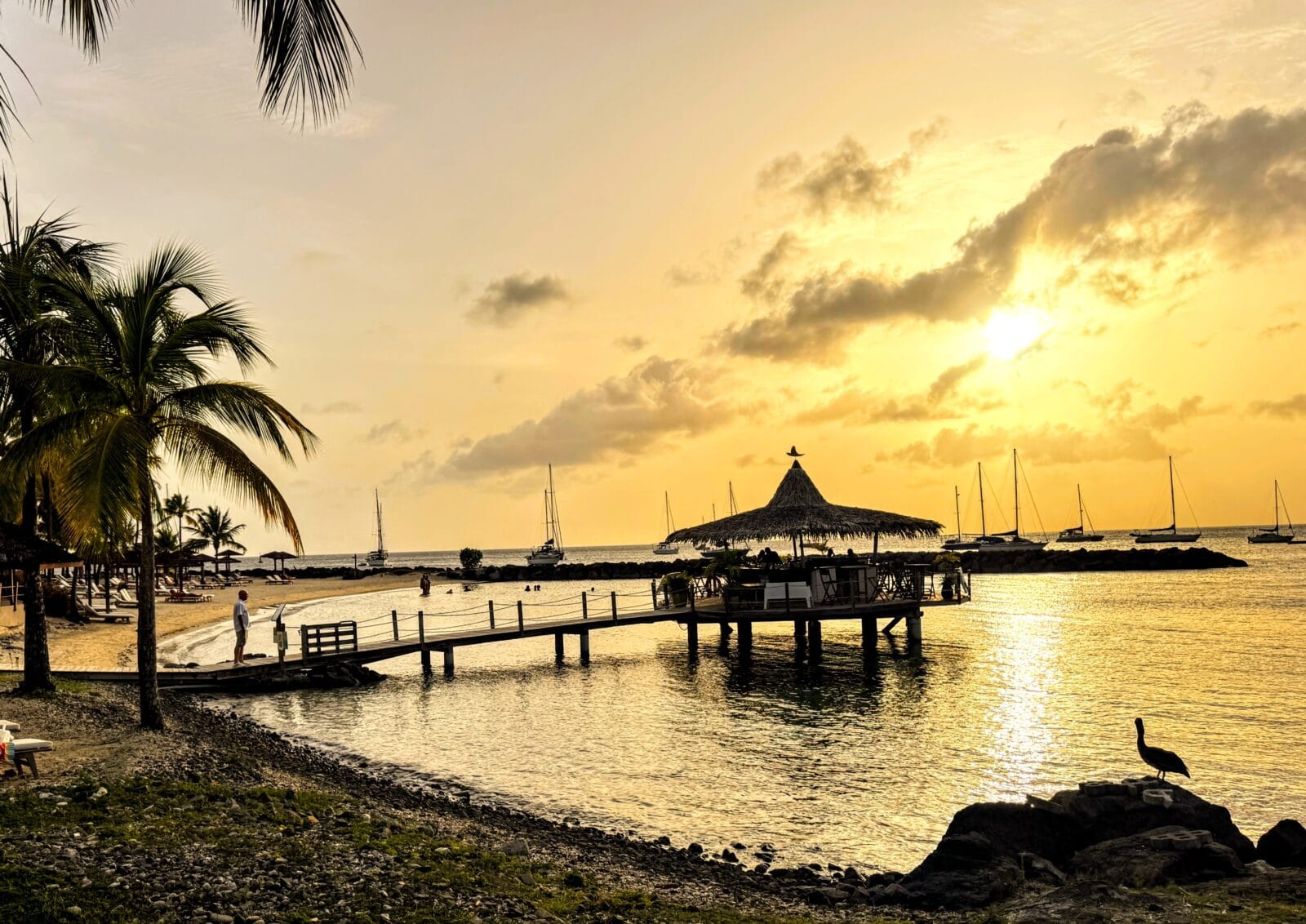
Sunsets are spectacular and so Caribbean at Anse Mitan in Les Trois-Îlets. At top, the view of the island’s shoreline from Saint-Pierre. (Barbara Ramsay Orr photos for VacayNetwork.com)
Chef Guy Ferdinand, wearing a multi-colored chef’s jacket with his shorts, delivers dishes steeped in locality, using fresh herbs from the garden to smoke the locally caught fish. Market vegetables go into a Martinique favorite, chatrou, an aromatic stew made with octopus, tomatoes, onions, lemons, and spices. Dessert is a dish of the local pineapple, a small and super-sweet Martiniquais species of the fruit, sliced paper thin and doused liberally with local rum.
Pair it with a self-serve table off to the side that is laid out with everything needed to make a rum concoction — white, dark, aged, and spiced options of the elixir, bitters, fruit juice, fresh limes, sugar syrup — and one needs nothing more to achieve gastronomic ecstasy.
Le Petibonhom, in Le Carbet, north of the capital of Fort de France, is the first stop on my trek around the splendid island in the French Antilles. And it just gets better as I eat my way around Martinique.
Culinary Roots of Martinique
One of the most appealing aspects of the very French island is its exemplary hybrid cuisine, a partnership of French and Creole dishes enhanced by local seafood and fresh tropical produce. There are also hints of China, India, and the Middle East in the flavors, a reflection of the diverse peoples brought to the island to work the sugar plantations.

Grilled octopus, served here with rice, is among the specialties at Martinique restaurants such as North Beach. (Barbara Ramsay Orr photo for VacayNetwork.com)
A drive south through mountains and along the edges of bays lined with white sand beaches brings me to the town of Le Diamant. The Little Rock Beach Bar serves up an ouzey baked camembert with baguette slices for dipping, followed by grilled lobster with frites. Once again I am dining on dishes cooked and served with great French flair, but my feet are in the sand and I’m so close to the water that I can almost feel the spray.
On another day I head to the northeast of the island, to the Atlantic coast. North Beach Restaurant overlooks Martinique’s famous Tombolo. It is a natural phenomenon where the path to the Islet Saint-Marie appears and disappears according to the season and the prevailing winds. If conditions are right, you can walk across the sand and then hike the trails.
The restaurant is charmingly local, serving dishes with a predominance of seafood. I love the grilled octopus. The accras are served again with “sauce chien” and I am finally given an explanation. The diner at the next table tells me that “dog sauce”, thankfully, has nothing to do with canines. The knives usually used to chop the ingredients are a brand called Chien, and thus the name. The spicy sauce is a delicious infusion of minced spring onions, shallots, garlic, chilli peppers, lime juice, and oil, steeped in a bit of boiling water. It is an island staple and goes well with the accras, or any barbequed meat or fish.
The star of the show at North Beach is the “brioche perdue”, a version of French toast made with thick slices of brioche grilled in butter, napped with a salted caramel sauce and topped with a scoop of vanilla ice cream.
In the evening, I stay at Club Med Les Bucaniers, at the southern tip of the island. Despite being an all-inclusive and despite most meals being self-serve buffet, the resort manages to rise above expectations. There is unctuous foie gras, lovely runny cheeses, and a cup of hot chocolate that may be one of the best things I have ever imbibed. Smooth, thick, and creamy, with a hint of cinnamon, it was decadence in a cup.
Habitation Céron Is a Caribbean Eden
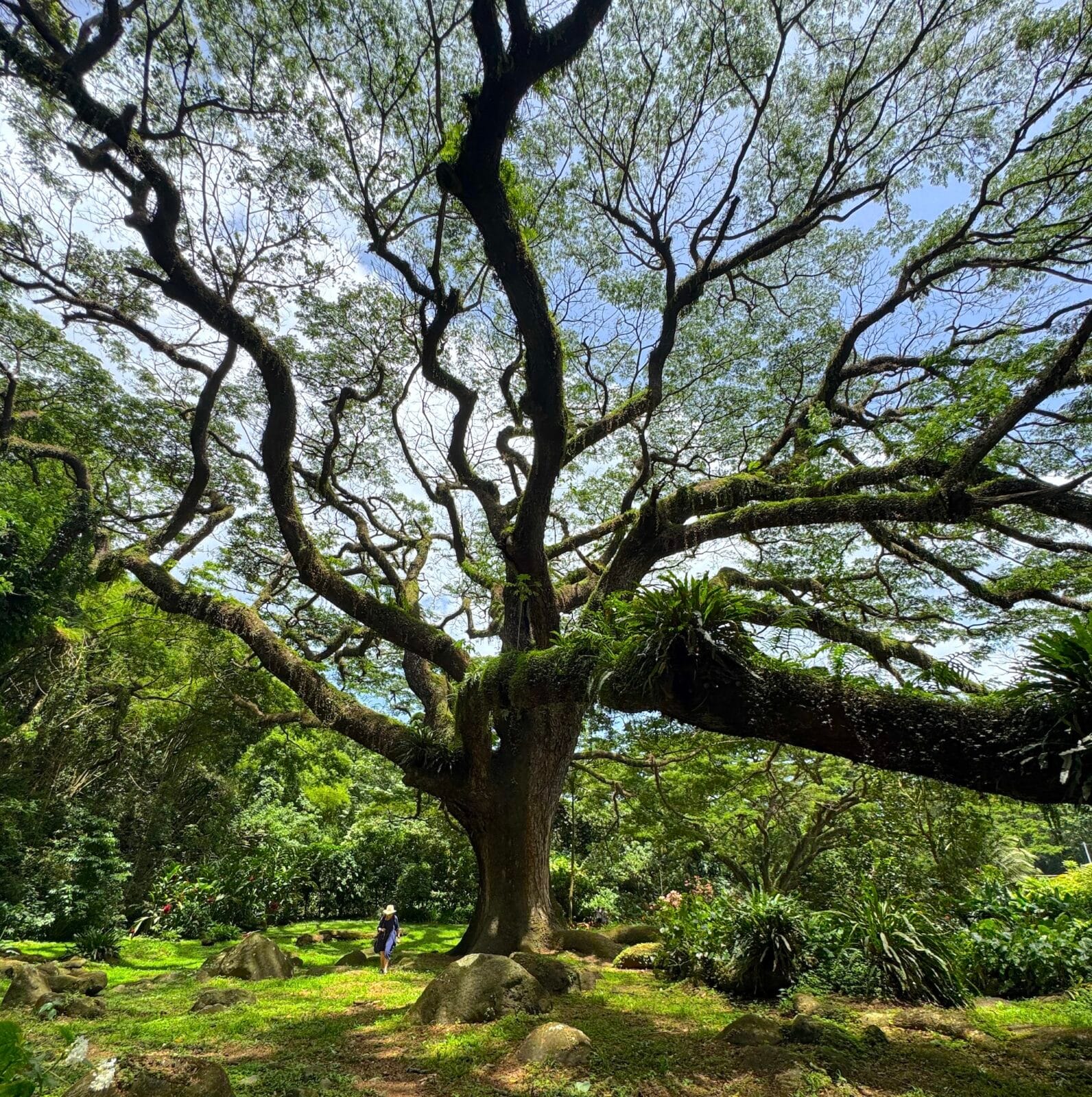
Habitation Céron features the much-beloved Zamana tree, an icon of France. (Barbara Ramsay Orr photo for VacayNetwork.com)
A good hike helps to sharpen the appetite and so early the next morning I head to the northwest coast to explore a hidden garden that is undergoing a rebirth.
Habitation Céron is meticulously local, carefully biodiverse, and culinarily inventive. Situated on the site of a former sugar refinery that dates to the 17th century, Habitation Céron is, as another hiker exclaims, “A paradise, a real Eden!”
The estate climbs up the northwest slopes of Mount Pelée and is recognized as the fourth-largest biodiversity hotspot in the world. There are flowers, birds, and, most importantly, the famous Zamana tree, a 350-year-old behemoth that was named France’s most beautiful tree in 2016. As I stand under its massive branches, I am both thrilled and horrified to see a teacup-sized tarantula scuttle up its trunk.
The space is full of birdsong. If you are observant, you can see the yellow sugarbird, the Madeira hummingbird, or the spectacled thrush. Birders are in heaven here.
After a hike through the gardens, I meet Amelie Marraud des Grottes who, with her family, has been instrumental in restoring the plantation. They have brought innovative energy to rejuvenating the estate and transforming the traditional chocolate and sugar cane products into exciting new versions — like a sugar-cane vinegar, chocolate mustard, chocolate flour or a chocolate-infused rum. With its 5000-square-foot gardens to explore, a restaurant that serves dishes produced from the estate’s gardens and a delicatessen that sells their specialty products, the plantation offers a perfect day trip.
Rum Capital of the World

Distillerie Depaz is among the splendid places to savor Martinique’s distinctive rums. (Barbara Ramsay Orr photo for VacayNetwork.com)
Every good meal needs a good tipple, and Martinique has you covered. In addition to a variety of imported French wines, the island produces what some have claimed is the world’s best rum.
Rum production is central to Martinique. Visitors will come specifically to experience the island’s unique and singular Rhum Agricole, made from fresh sugar cane juice instead of molasses and the only rum to be given an A.O.C. designation (Appellation d’Origine Contrôlée).
I tour one of the older rum plantations, Distillerie Depaz, witnessing the production methods and experiencing a flight of rum drinks served in the luxurious surroundings of the manor house that rum built. Squint and you will think the manicured gardens of the estate could be a chateau in France. There is also a good restaurant on the property, Le Moulin de Cannes, in a restored sugar cane mill.
St. James is another distillery that offers a quality tour experience, along with a rum tasting. I learn that the fine-aged rum agricole should be sipped straight, no ice, in a snifter, to appreciate the many flavor components and aromas.
Culture Highlights of Martinique
The exuberant culinary richness of Martinique is an obvious draw to the island, but there is also a deep and layered history to explore. Martinique is famous as the birthplace of the future Empress of France, Josephine, an island girl who came to dominate French taste for years as Napoleon Bonaparte’s paramour and wife. I stroll around the lush gardens and the ruins of the estate that was her birthplace, Domaine de la Pagerie, in Trois-Îlets. The museum displays artifacts from her life, like Josephine’s bed and her correspondences with Napoleon.
In Saint-Pierre, I tour the museum devoted to the disastrous volcanic eruption of Mount Pelée, the Mémorial de la Catastrophe de 1902 – Musée Franck A. Perret. The eruption killed 28,000 inhabitants in minutes, engulfing the prosperous town and destroying the island’s center of culture and commerce. The museum features artifacts, photographs, and films detailing the calamitous event. Later I stand amidst the ruins of a once elegant theatre destroyed by the eruption. In the corner is a cell that has escaped destruction and it was in this room that one of the few survivors of the eruption, Louis-Auguste Cybaris, had been locked as a result of a drunken brawl and thus escaped death because of the thick walls.
I walk through La Savane des Esclaves, an open-air museum that documents the history of slavery on the island. It recreates the traditional huts and Creole gardens, illustrating life before and after the era of slavery.
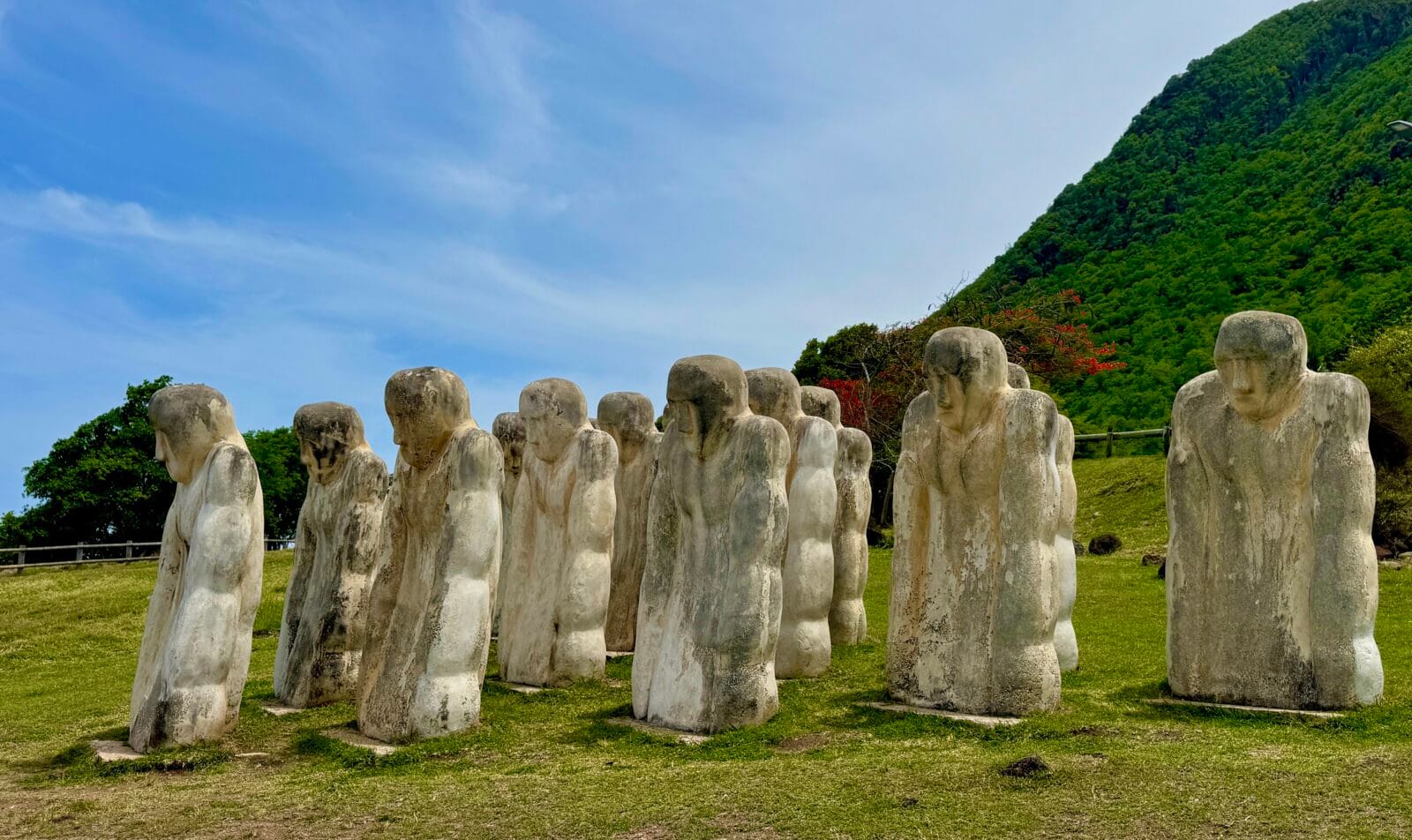
The Anse Cafard Slave Memorial is one of the most visited landmarks in Martinique. (Barbara Ramsay Orr photo for VacayNetwork.com)
Near Le Diamont, I find the Anse Cafard Slave Memorial, a moving remembrance of 300 slaves who died in shackles when a slave ship sank. The memorial consists of 15 figures sculpted in concrete by Martinique sculptor Laurent Valére. Each of the silent brooding figures stares out to sea. It is a solemn installation, and I sit beside the figures for a while looking out to where the ship went down and contemplate.
Shopping in Martinique Markets
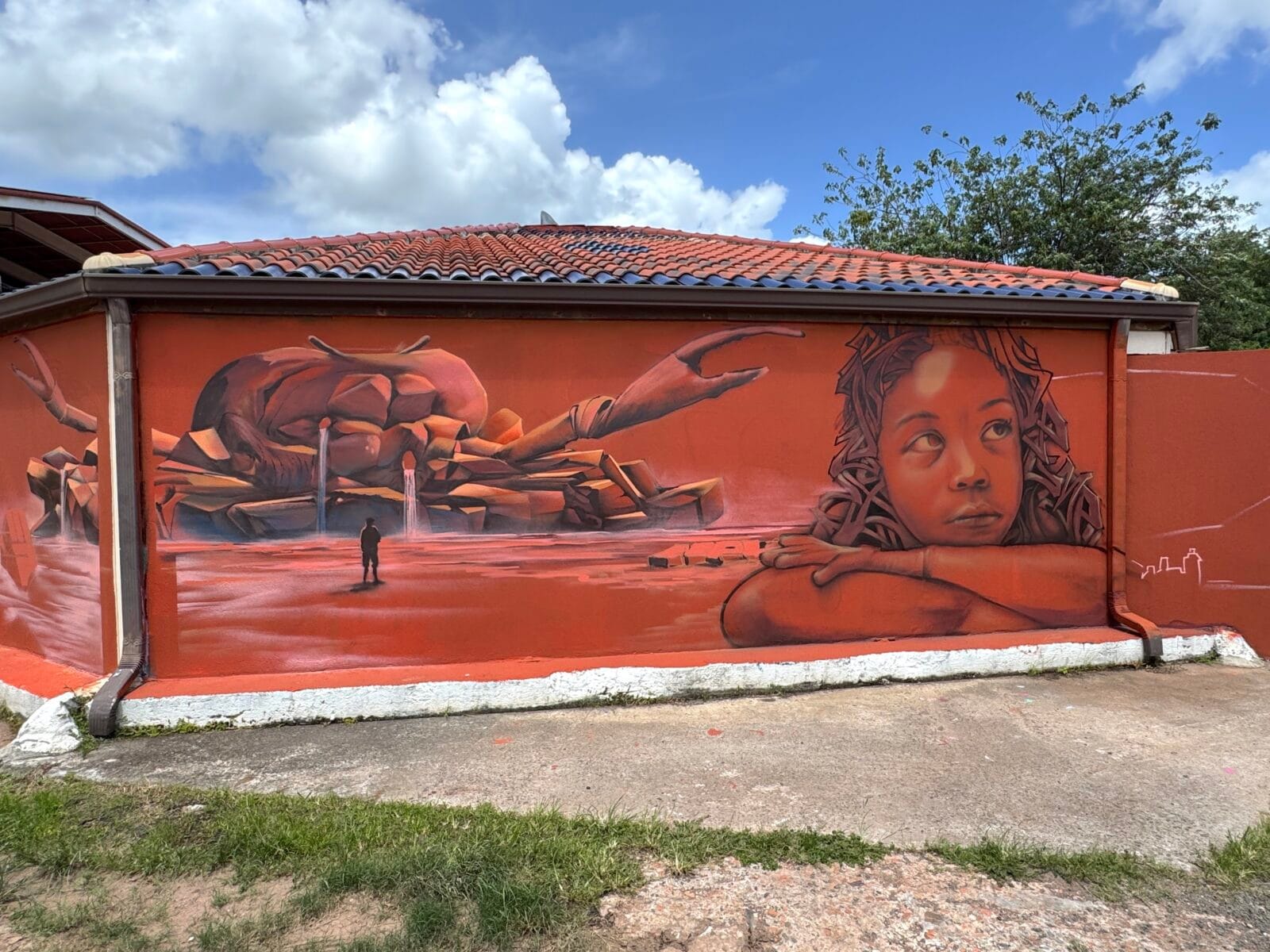
Village de la potterie features murals of Martinique residents and cultural icons. (Barbara Ramsay Orr photo for VacayNetwork.com)
The Village de la Poterie near Trois-Ilets is a collection of ancient buildings and authentic small houses which are home to artisans, potters, wine and spirit stores, and cafes. It is the ideal place to pick up handmade objects as souvenirs, or just to browse and enjoy a coffee. There are excellent murals and public art to enjoy, and you can have lunch at La Mandoline, which serves authentic French and Caribbean dishes.
Trois-Îlets has a charming shopping district with mostly small stores.
The Market Hall on Rue Blenac in Fort de France is a great place to shop for spices, local beers, and rum as well as fresh fruits and vegetables. It’s busy and happily noisy, a good place for people watching. At the back of the market are a couple of simple restaurants where you can have a very affordable and simple lunch.
In addition to food and culture, there is the stunning canvas of sea and mountain and sky at which to marvel. The island possesses much natural beauty, hence its designation as the Island of Flowers. It is green and lush, with flowering trees, clear blue water, vast expanses of white sand and towering Mount Pelée, with its head in the clouds.
The harmonious convergence of the two worlds, European and Creole, makes Martinique a culinary and cultural destination in the Caribbean that delivers more than expected. It’s a delicious choice for anyone who prizes great food as part of their travel experience and a satisfying cultural journey for the traveller craving more than a beach holiday.
MORE ABOUT VISITING MARTINIQUE

Distillerie Depaz includes a manor house and gardens that visitors can explore. (Barbara Ramsay Orr photo for VacayNetwork.com)
Getting There: The island has become a newly desirable destination. U.S. east coast cities have direct flights and Air Canada has direct flights from Toronto, complementing the year-round direct flights from Montreal. Flights land in the capital of Fort de France.
Getting Around: Because this is a French Island, the infrastructure is top notch. Roads are excellent, with roundabouts and good signage. It is a busy island, though, and because of the need for roads to wind around bays and over mountains, it can take time to get from one end of the island to the other, even though it is only 50 miles (80 kilometers) long and 22 miles (35 kilometers) wide. Rental cars are available at the airport.
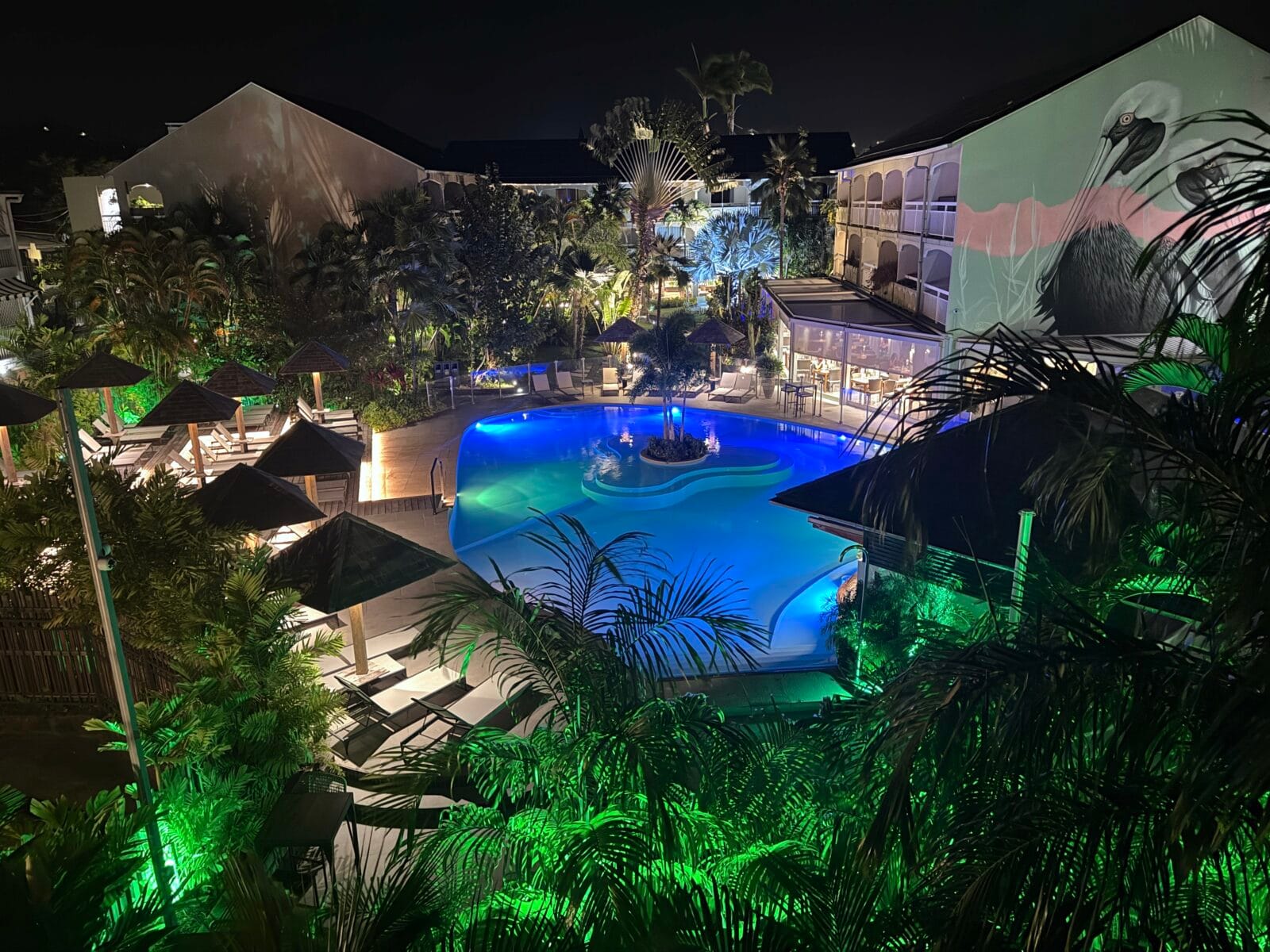
La Pagerie is a high-quality hotel that features an immaculate pool in the heart of the property. (Barbara Ramsay Orr photo for VacayNetwork.com)
Where to Stay: La Pagerie is a four-star hotel in Trois-Îlets, to the south of the island. It is perfectly situated close to a shopping area and a short walk from one of the best beaches on the island, Anse Mitan. The hotel has been recently renovated, and there is a very attractive pool with a swim-up bar in the center of the hotel gardens. Food in the dining room is excellent.
Club Med Les Bucaniers is an iconic all-inclusive resort that sits near the southern tip of Martinique. The resort has recently been renovated. It’s a lovely property, curving around a white sand beach.
Currency exchange: The currency is the euro; 1 euro = $1.15 USD or $1.63 CAD (approximately).
Notable: Although the flag and the official language are French, Martinique’s identity is distinctly Afro-Caribbean. While many of the people dealing with the public speak English as well as French, it is a good idea to have a translation app handy.




